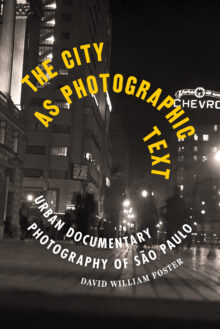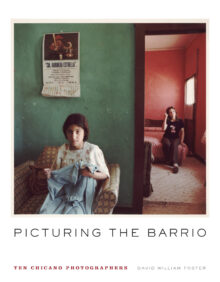
David William Foster
David William Foster (1940–2020) was a Regents Professor of Spanish and women and gender studies at Arizona State University. Over his career, he authored more than fifty books, including Picturing the Barrio: Ten Chicano Photographers; El Eternauta, Daytripper, and Beyond: Graphic Narrative in Argentina and Brazil; and Argentine, Mexican, and Guatemalan Photography: Feminist, Queer, and Post-Masculinist Perspectives.
The City as Photographic Text
Urban Documentary Photography of São Paulo
The City as Photographic Text offers the first comprehensive presentation of photography on São Paulo. But more than just a study of one city’s photographic legacy, this book is a manual for how to understand and talk about Latin American photography in general. Focusing on major figures and referencing widely available books of their work, David William Foster offers a unique analysis of how photographers have contributed to our understanding of the megalopolis São Paulo has become. Eschewing a conventional historical approach, Foster explores how best to interpret visual urban life. In turn, by focusing interest on the photographic text and the ways in which it creates an interpretive meaning for the city, rather than rehearsing the circumstances under which the photographs were taken, this study provides a model for productive comment on urban photography as a project of visual meaning with important artistic attributes. As a unique entry in the inventory of scholarly writing on São Paulo, The City as Photographic Text adds to our understanding of the enormous cultural significance this city holds as a world-class urban center.
Picturing the Barrio
Ten Chicano Photographers
Mexican-American life, like that of nearly every contemporary community, has been extensively photographed. Yet there is surprisingly little scholarship on Chicano photography. Picturing the Barrio presents the first book-length examination on the topic. David William Foster analyzes the imagery of ten distinctive artists who offer a range of approaches to portraying Chicano life. The production of each artist is examined as an ideological interpretation of how Chicano experience is constructed and interpreted through the medium of photography, in sites ranging from the traditional barrio to large metropolitan societies. These photographers present artistic as well as documentary images of the socially invisible. They and their subjects grapple with definitions of identity, as well as ethnicity and gender. As such, this study deepens our understanding of the many interpretations of the “Chicano experience.”


